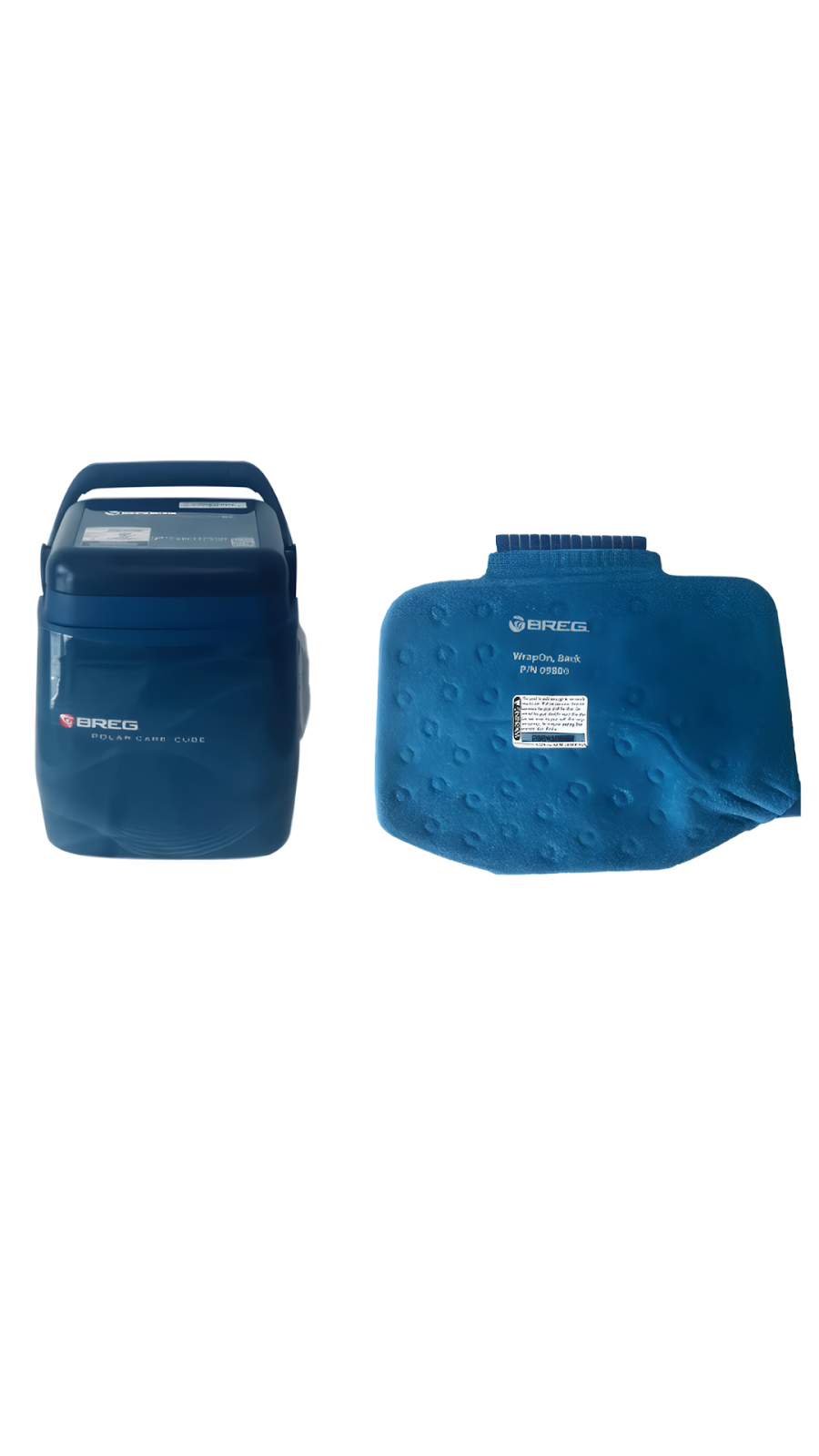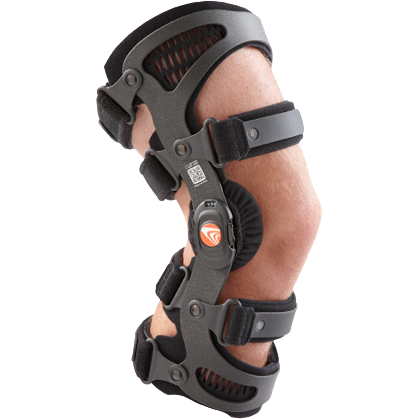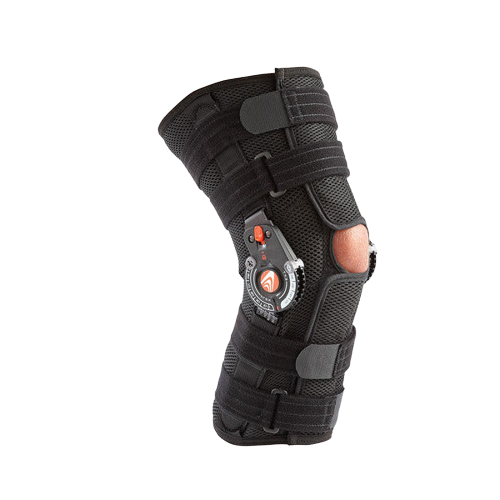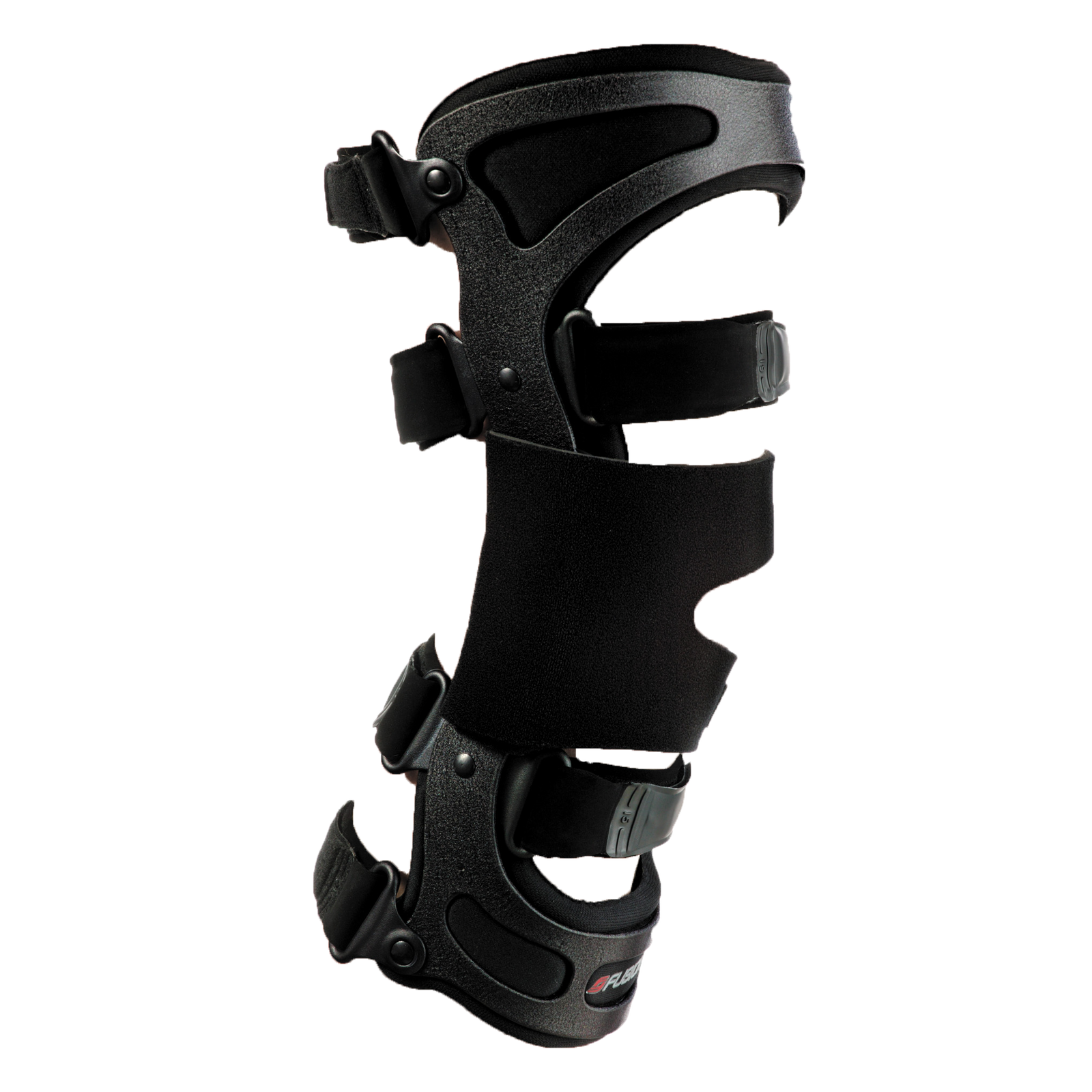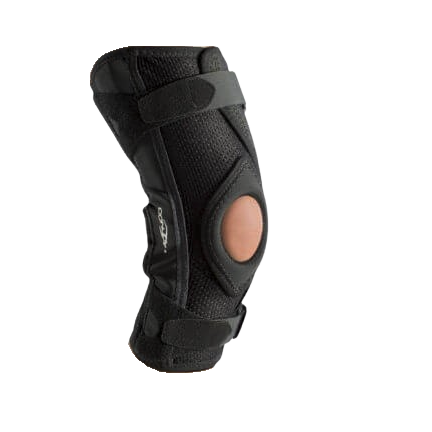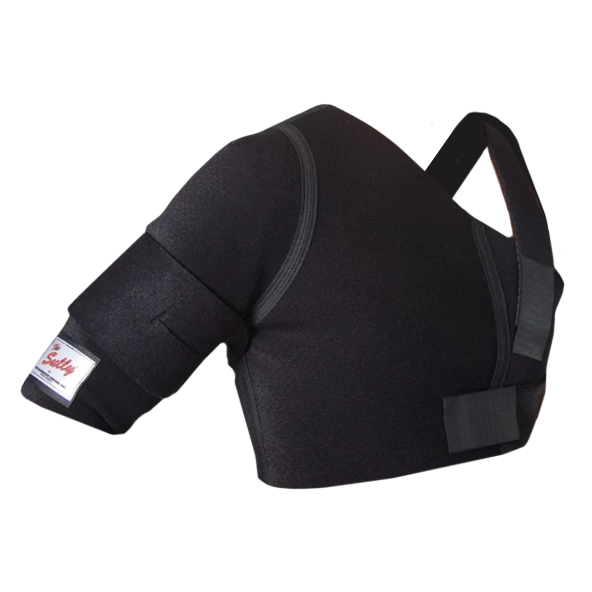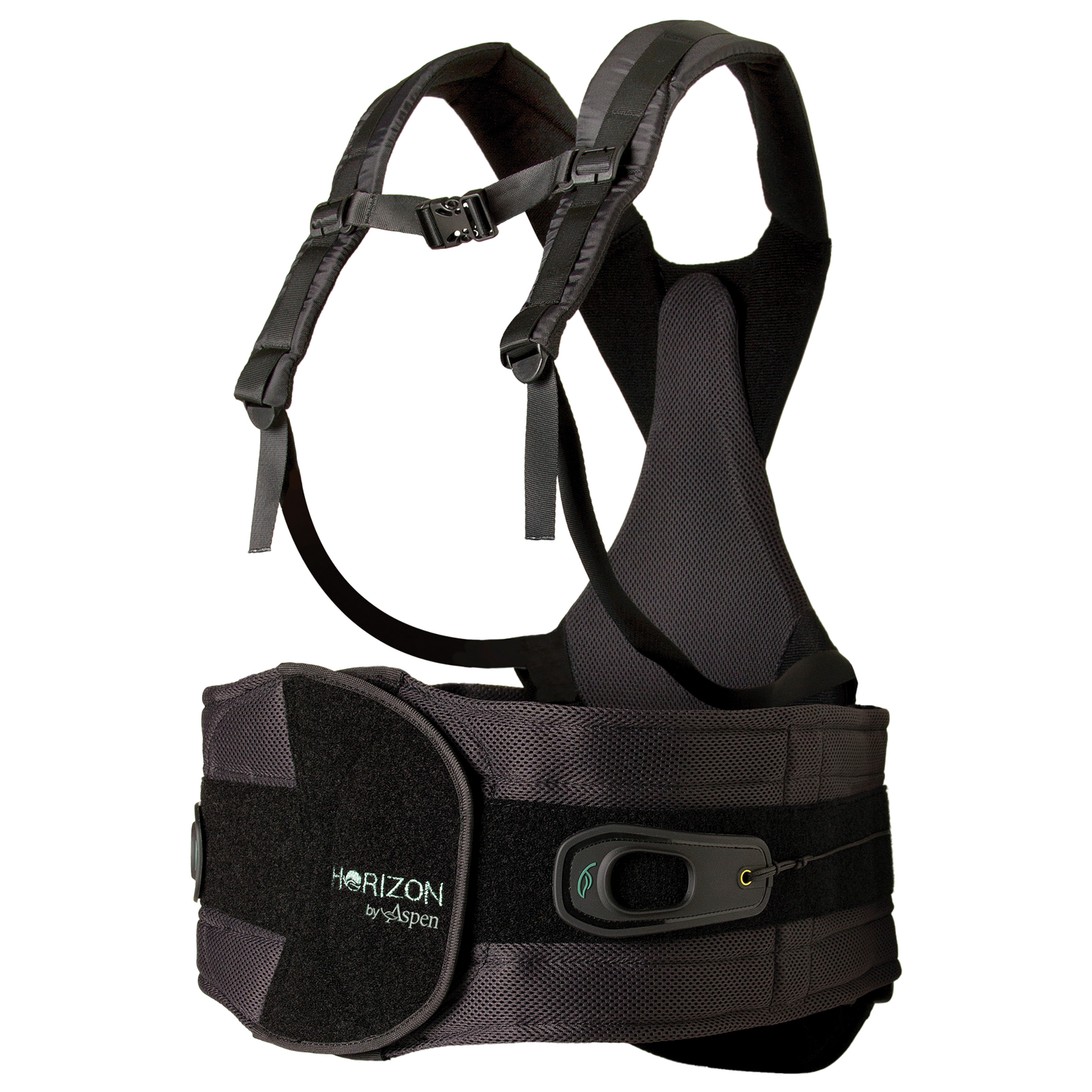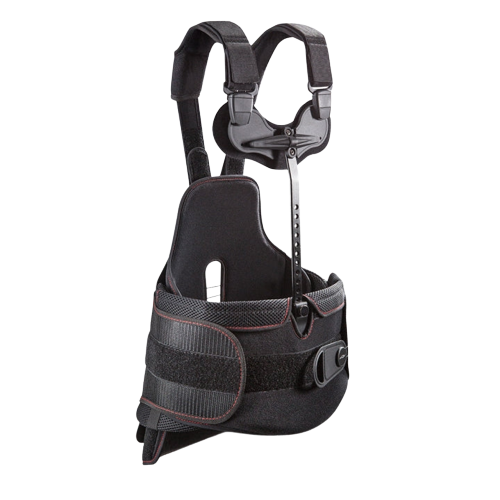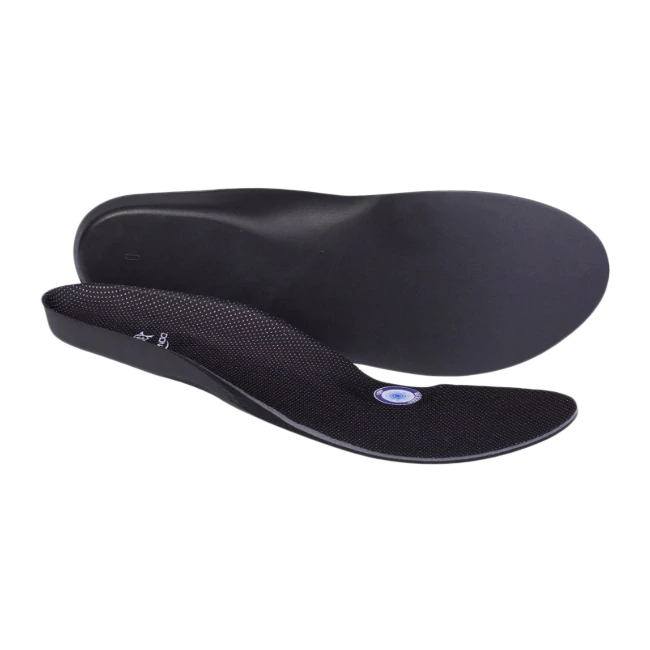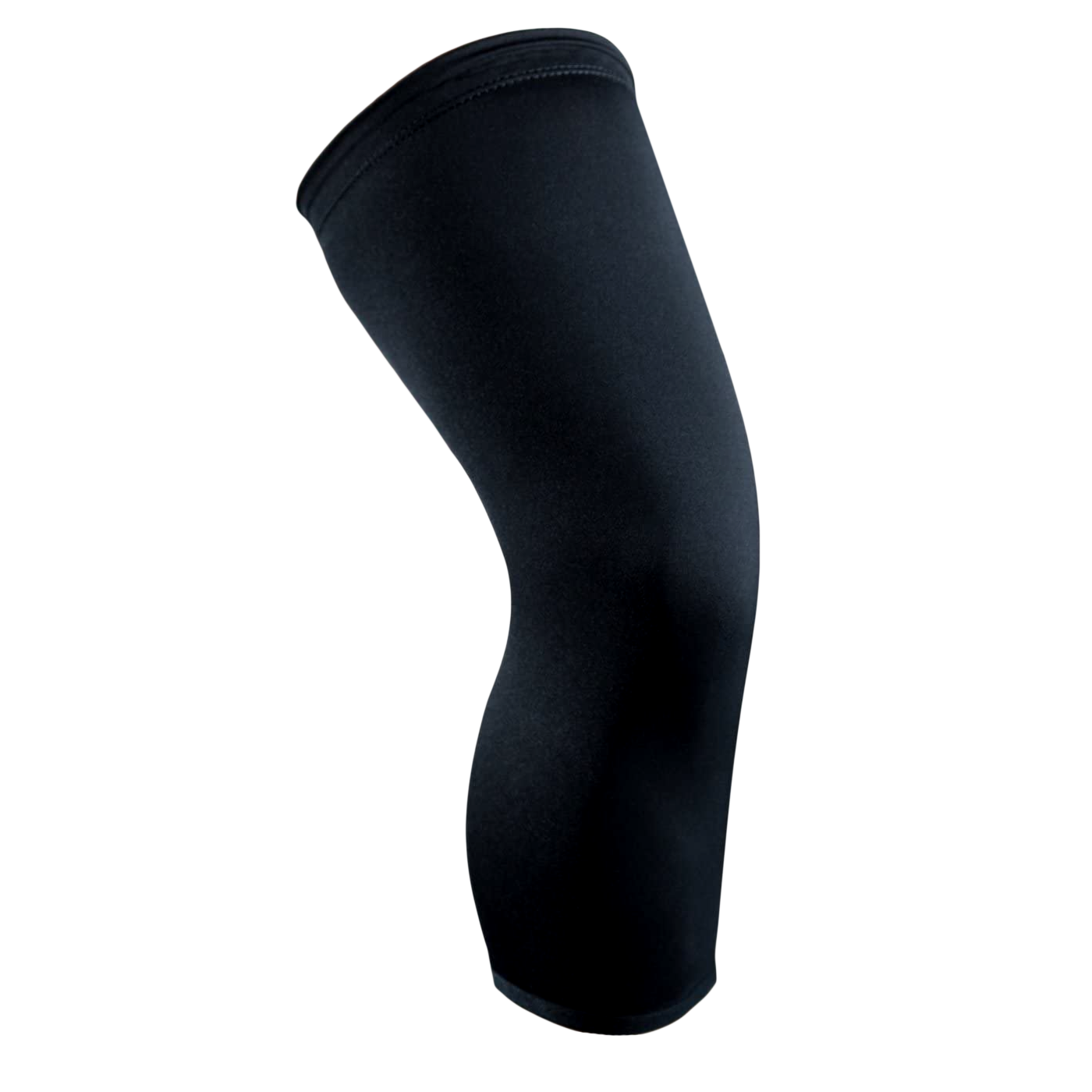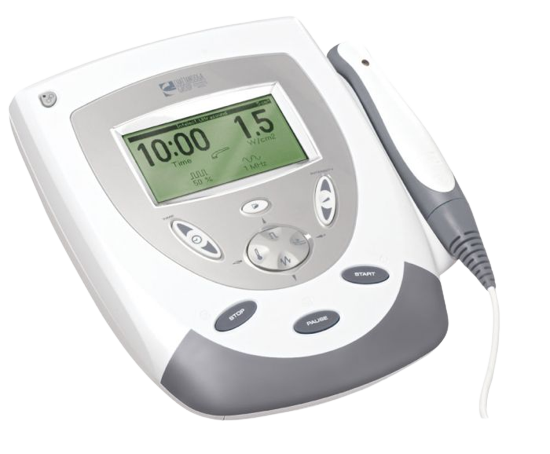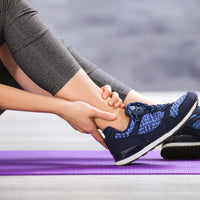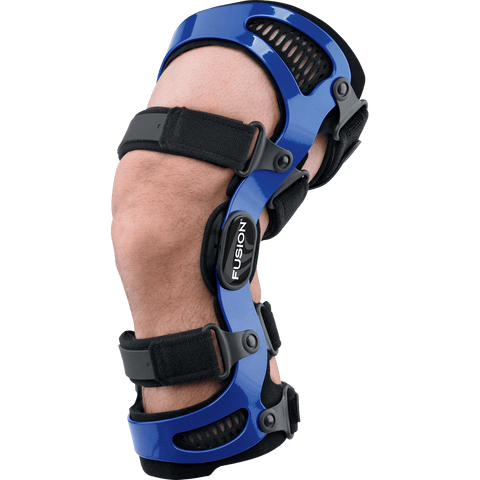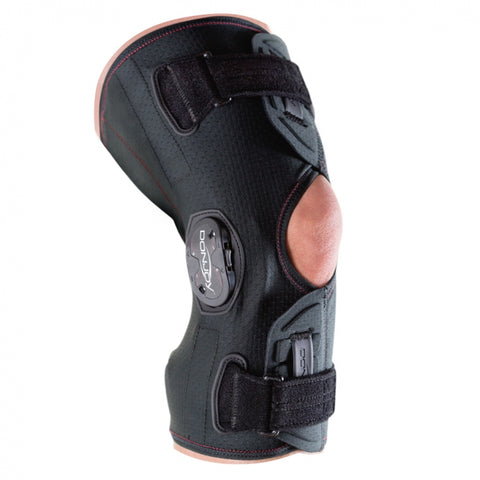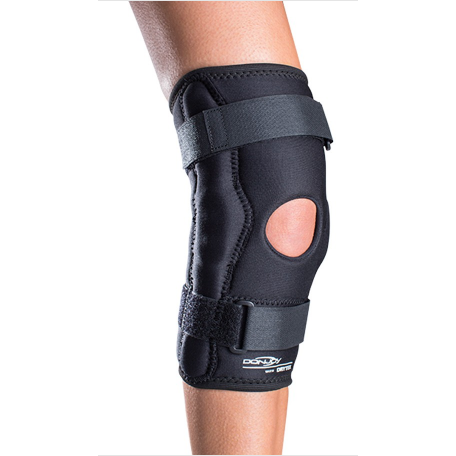
Key Takeaways:
- Sleep Support Aids Recovery: Enhanced support and alignment during sleep can aid recovery and pain management for knee injuries and chronic conditions.
- Consider Drawbacks: Potential drawbacks such as skin irritation, pressure sores, and muscle stiffness require careful consideration and proper fit of the knee brace.
- Get Healthcare Consultations: Consultation with healthcare professionals and personalized adjustments can help balance comfort and support, maximizing the benefits of wearing a knee brace to bed.
Have you ever wondered if sleeping with a knee brace is the best option for your recovery? Knee braces are designed to provide support and stability, but it can be unclear whether they should be worn during sleep. Understanding the role of a knee brace and when to use it is key to ensuring you’re taking the right steps toward healing.
At OrthoBracing, we carry a range of trusted orthopedic products backed by years of experience in injury prevention and recovery. Our knowledge and commitment to quality make us a reliable source of information when choosing the best knee care solutions.
In this article, we’ll discuss whether wearing a knee brace while sleeping is beneficial, potential considerations, and how to make an informed decision for your comfort and recovery.
The Role Of Knee Braces In Sleep
Knee braces are commonly used to provide support, stability, and protection for injured or weakened knees, helping reduce pain and aid in recovery. While they are primarily designed for daytime activities, some people consider wearing them while sleeping to maintain proper alignment and prevent unnecessary movements that could worsen their condition. For individuals recovering from surgery or managing chronic knee issues, wearing a brace at night may offer added peace of mind by keeping the knee stable during rest.
However, deciding to sleep with a knee brace should consider comfort and individual needs. Some may find it restrictive or uncomfortable, potentially interfering with sleep quality. It's important to assess whether the benefits of wearing a brace at night—such as improved stability—outweigh any discomfort or disruption to restful sleep.
Benefits Of Wearing A Knee Brace While Sleeping
Here are several reasons why finding the best knee sleeve for sleeping could be advantageous for individuals seeking relief and support at night.
Support And Stability
First and foremost, a knee brace provides vital support and stabilization for the knee joint. After undergoing surgery or during the treatment of knee conditions, it's essential to maintain the correct alignment of the knee to facilitate healing. A knee brace ensures that your knee maintains its proper position while you are sleeping, aiding in a quicker and smoother recovery process.
Injury Prevention
A knee brace also prevents potential re-injury by holding the knee in a stable position. Movements during sleep, especially for those who might toss and turn, can put the knee at risk of bending or twisting in ways that are not conducive to healing. With the added support of a knee brace, these unintentional movements become less of a concern, offering peace of mind for a restful night's sleep.
Pain Management
Pain and discomfort can significantly disrupt sleep quality. A well-fitted knee brace can help alleviate knee pain by providing compression and support, enhancing the overall quality of sleep. By reducing pain and discomfort, individuals can achieve more comfortable and uninterrupted sleep, which is paramount for the body's healing and recovery processes.
Swelling Control
Swelling is a common issue associated with knee injuries and conditions. Wearing a knee brace while sleeping can help manage and reduce swelling by applying gentle compression to the knee area. This compression aids in controlling inflammation and can expedite the healing process by reducing the symptoms that might exacerbate the condition.
Enhanced Circulation
Another benefit of wearing a knee brace to bed is improved circulation. The brace's compression promotes blood flow to the knee area, which is essential for healing and recovery. Enhanced circulation ensures that nutrients and oxygen are efficiently delivered to the knee while also facilitating the removal of waste products from the area.
Customization And Comfort
Today’s knee braces are designed with comfort and customization in mind. With various sizes and materials available, individuals can choose the best knee sleeve for sleeping that fits their needs. A properly fitting knee brace not only maximizes the benefits mentioned but also minimizes the risk of any potential discomfort or complications, such as skin irritation and pressure sores.
When Should You Consider Sleeping With A Knee Brace?
Deciding to sleep with a knee brace is a decision that should be made carefully and, ideally, in consultation with a healthcare professional. Here are several scenarios when wearing a knee brace during sleep might be particularly beneficial:
Post-Surgical Recovery
Your knee joint will likely require additional support to heal properly following knee surgery. Sleeping with a knee brace can help maintain the correct alignment and stability of the knee, which is crucial for a smooth recovery process. It ensures that the knee doesn't move into harmful positions at night that could delay healing or cause further injury.
Chronic Knee Conditions
Individuals with chronic conditions such as osteoarthritis, rheumatoid arthritis, or patellar tendinitis may find relief in wearing a knee brace to bed. These conditions can cause persistent discomfort and instability in the knee. A knee brace can provide the necessary support to alleviate discomfort, potentially leading to better sleep quality and reduced night-time pain.
Athletic Recovery
Athletes often push their bodies to the limit, sometimes resulting in knee injuries or strain. Using a knee brace during sleep can be a proactive approach to recovery, providing the joint the support it needs to heal overnight. This can be particularly useful after strenuous activities that put significant stress on the knees, as it can help manage inflammation and pain, thus enhancing the body’s natural recovery process.
Preventing Further Injury
For those who have experienced knee injuries in the past, sleeping with a knee brace can offer a preventive measure against re-injury. Keeping the knee stable and properly aligned while sleeping can reduce the risk of awkward movements that might strain the knee further, especially in those who move a lot during sleep.
Different Types Of Knee Braces And Their Uses
Selecting the right knee brace is crucial for ensuring comfort, support, and effectiveness, especially when considering wearing one for an extended period, such as during sleep. Knowing the different types of knee braces and their specific uses can help you decide which is the best knee sleeve for sleeping and your unique situation.
Prophylactic Braces
Designed primarily for athletes, prophylactic braces aim to protect knees from injuries during high-impact sports. While not typically recommended for sleep due to their bulk and design focused on protection rather than overnight support, understanding their purpose helps differentiate options.
Functional Braces
These braces provide support to injured knees. Constructed to stabilize the knee during recovery, functional braces can be an excellent option for those recovering from surgery who want to maintain alignment and reduce strain on the knee during sleep.
Rehabilitative Braces
Rehabilitative braces limit harmful knee movement while allowing for some range of motion during recovery from surgery or serious injury. They are generally used in the weeks immediately following an injury or operation. A rehabilitative brace can offer substantial support for sleeping purposes but may be bulkier than ideal for some sleepers.
Unloader Or Offloader Braces
These are designed specifically for those suffering from arthritis. They relieve pressure from the affected knee area by shifting the weight of the most damaged knee portion, providing pain relief and support. For someone with arthritis looking for a knee brace for nighttime use, an unloader brace may offer the support needed without undue pressure.
Compression Sleeves
Compression sleeves, often referred to when discussing the best knee sleeve for sleeping, offer support and improve blood circulation while being less bulky than other braces. They are ideal for individuals with mild to moderate knee pain or those recovering from minor injuries or surgery. The snug fit and breathable material of a high-quality compression sleeve can make it comfortable enough for all-night wear, delivering gentle support without the rigidity of more substantial braces.
How To Choose The Best Knee Sleeve For Sleeping
Finding the best knee sleeve for sleeping is crucial for those with knee injuries or conditions that require additional support. A good knee sleeve can facilitate a more comfortable night’s sleep and contribute to a faster and more effective healing process. Here are some key considerations to keep in mind when selecting a knee sleeve for overnight wear:
Material Quality And Comfort
The material of the knee sleeve should be breathable and soft to prevent overheating and sweating, which can lead to skin irritation. Fabrics with moisture-wicking properties can keep the skin dry and comfortable throughout the night. Additionally, the material should be durable enough to withstand regular use without losing its elasticity and support.
Proper Fit And Support
A knee sleeve that fits properly is essential. It should be snug enough to support and maintain knee alignment without being so tight that it restricts blood flow or causes discomfort. Many knee sleeves are available in various sizes; some offer adjustable straps to ensure a custom fit. It’s important to measure your knee according to the manufacturer's instructions to choose the correct size.
Flexibility And Range Of Motion
While support is crucial, the knee sleeve should also allow for a natural range of motion. Too much rigidity can lead to muscle stiffness and discomfort. Look for a knee sleeve that supports the knee while still allowing for some movement, as this will help prevent stiffness in the morning.
Ease Of Use
Consider how easy it is to put on and remove the knee sleeve, especially if you must do so while experiencing pain or discomfort. Sleeves that can be easily slid up the leg or those with wrap-around designs can be more user-friendly.
Durability
Look for knee sleeves made from high-quality materials that can withstand nightly use without losing shape or support. Durable stitching and construction are also important to ensure the sleeve lasts as long as needed.
Additional Features
Some knee sleeves have extra features, such as gel inserts for cooling or heating, which can help manage knee pain. While not essential, such additional features could enhance your comfort and the healing process.
Consulting Healthcare Professionals
As with any medical-related accessory, it's advisable to consult with a healthcare professional before wearing a knee sleeve to bed, especially post-surgery or severe injury. They can provide personalized advice and recommendations based on your condition and recovery needs.
Trial Period And Adjustments
Finding the perfect knee sleeve for sleeping might take some time. Be prepared to try different brands or styles until you find one that meets all your comfort, support, and breathability needs. Don't hesitate to make adjustments, such as adding extra padding or using a pillow for additional knee support, to enhance your sleeping experience.
Tips For Sleeping Comfortably With A Knee Sleeve
Here are some tailored tips to ensure you benefit from wearing the best knee sleeve for sleeping.
Choose The Right Fit
Selecting a knee sleeve that fits well is paramount. A too-tight sleeve may restrict circulation and exacerbate swelling, while a too-loose one won't provide the necessary support. Measure your knee according to the manufacturer's guidelines to ensure an ideal fit.
Gradually Increase Wear Time
If you're not used to sleeping with a knee brace, start by wearing it for short periods during the night. This allows your body to adjust to the sensation and decreases the likelihood of discomfort or skin issues.
Use Supportive Pillows
Placing a pillow under or between your knees can alleviate pressure and help maintain proper knee alignment while you sleep. This especially benefits side sleepers or individuals who move often at night.
Follow Healthcare Professional Advice
Always consult a healthcare professional before sleeping with a knee sleeve, especially if you're recovering from surgery or have a specific knee condition. They can provide personalized guidance based on your unique needs and recovery goals.
Listen To Your Body
Pay attention to any signs of discomfort or adverse effects, such as increased pain, swelling, or skin irritation. If you experience any of these symptoms, consider taking a break from wearing the sleeve at night and consult a medical professional.
Potential Drawbacks Of Sleeping With A Knee Brace
While the benefits of wearing a knee brace to bed can be significant, especially for those recovering from surgery or chronic knee conditions, weighing these against potential drawbacks is essential. Awareness and careful consideration of these factors can help ensure a more comfortable and effective knee brace use during sleep.
Skin Irritation And Pressure Sores
One of the primary concerns when sleeping with a knee brace is the risk of skin irritation and the development of pressure sores. Prolonged pressure exerted by the brace on the skin can lead to discomfort and, in severe cases, result in sores that may require additional treatment. It's crucial to choose a brace made from breathable materials and ensure it fits well to mitigate these risks.
Restriction Of Blood Flow
Tightly worn knee braces can restrict blood flow if not fitted correctly. A brace that is too tight can hinder circulation, leading to numbness or tingling sensations in the leg. Ensuring the brace is snug but not constricting is advisable, allowing for adequate blood flow throughout the night.
Muscle Stiffness And Atrophy
Another consideration is the possibility of muscle stiffness or the risk of muscle atrophy over extended periods. Immobilizing a joint can decrease muscle strength and flexibility if not balanced with recommended physical therapy or exercises. It's important to follow a healthcare professional's advice on maintaining muscle health while using a knee brace for sleep.
By considering these potential drawbacks and taking proactive steps to address them, individuals can enjoy the benefits of wearing a knee brace to bed while minimizing negative impacts. Proper care, correct fitting, and adherence to professional guidance are key to effectively using a knee brace for recovery and pain management during sleep.
How To Maintain And Care For Your Knee Sleeve
Maintaining your knee sleeve is essential for ensuring that it provides the optimal support and comfort you need, especially if you're considering wearing it to bed. Proper care can prevent the buildup of odors, bacteria, and potential degradation of the material, which could otherwise lead to skin irritation or reduced sleeve functionality. Here are key points to keep in mind for the care and maintenance of your knee sleeve:
- Wash Regularly: Following the manufacturer's instructions, regularly wash your knee sleeve to remove sweat, dirt, and bacteria that can accumulate during use. Most knee sleeves are made from neoprene or similar materials that are durable and easy to clean. However, it's best to avoid harsh detergents that can break down the fabric over time.
- Air Dry: Lay your knee sleeve flat or hang it to air dry after washing. Avoid using a dryer, as the high heat can warp or shrink the material, affecting its fit and support. Air drying also helps maintain the elasticity and integrity of the sleeve's fabric.
- Inspect for Wear and Tear: Regularly check your knee sleeve for any signs of wear, tear, or stretching. Over time, knee sleeves can lose their compression and support, which is crucial for their effectiveness, especially if you wear them for therapeutic reasons during sleep.
- Follow Usage Recommendations: Be mindful of the length of time you wear your knee sleeve. Continuous, prolonged use without breaks can lead to skin irritation or discomfort. If you're wearing it for sleeping, ensure it's not too tight, as this can restrict circulation and cause numbness or tingling in your leg.
- Storage: When not in use, store your knee sleeve in a cool, dry place away from direct sunlight. Proper storage prevents the material from degrading and ensures that it is ready for use whenever you need it.
Final Thoughts
Deciding whether to sleep with a knee brace involves weighing the benefits of additional support and alignment against the potential risks of discomfort and irritation. For many, particularly those in recovery from surgery or suffering from chronic knee conditions, the best knee sleeve for sleeping can be a pivotal component of their healing process. It's essential, however, to select a knee brace that is comfortable and properly fits to minimize the risk of adverse effects such as skin irritation or pressure sores.
OrthoBracing emphasizes the importance of adhering to healthcare professionals' advice when considering night-time brace wear. Their guidance, combined with taking measured steps for comfort — like adjusting pillows to alleviate pressure — can make all the difference in achieving restful sleep while supporting your knee's recovery or managing chronic conditions.
Ultimately, deciding to wear a knee brace to bed should align with personal comfort and medical advice. By making informed choices and considering the outlined benefits and considerations, individuals can better manage their knee health, contributing to a smoother recovery and improved overall well-being.
Read also:
- The 7 Best Cold Therapy Machines for Faster Recovery Times
- Best Ice Machine For Knee
- How Long to Use Cold Therapy After Surgery
Frequently Asked Questions About The Best Knee Sleeve For Sleeping
How tight should a knee brace be while sleeping?
A knee brace should be snug enough to provide support without causing discomfort or restricting blood flow. The best knee sleeve for sleeping should allow for a slight flexion and extension of the knee, ensuring both comfort and efficacy in maintaining knee stability.
Can you develop skin irritation from sleeping with a knee brace?
Wearing a knee brace for prolonged periods, including overnight, can sometimes lead to skin irritation, pressure sores, or a rash, particularly if the brace is too tight or if hygiene practices are not followed. It's important to choose a brace with breathable materials and ensure that both your skin and the brace itself are clean before wearing it to bed.
How can I make my knee brace more comfortable for sleeping?
To enhance comfort, you may want to:
- Use pillows or cushions to elevate and gently support the knee comfortably.
- Ensure the knee brace is not too tight to prevent unnecessary pressure on your leg.
- Consider a knee brace with soft, breathable materials designed specifically for extended wear, such as the best knee sleeve for sleeping.
What are the signs that I should not sleep with my knee brace on?
You should consider removing your knee brace at night if you experience:
- Increased pain or discomfort that disrupts your sleep.
- Signs of impaired circulation, like numbness, tingling, or a change in skin color.
- Evidence of skin damage, such as sores, bumps, or rashes.
Can sleeping with a knee brace cause blood circulation issues?
While rare, improperly fitted or excessively tight knee braces can restrict blood flow, potentially leading to circulation issues. Monitoring how your leg feels while wearing a brace and adjusting as necessary can help mitigate this risk.
What if I experience pain while sleeping with a knee brace?
If sleeping with a knee brace causes pain, reconsider its fit, positioning, and necessity. Pain may indicate improper fit or the need for a different type of support. Consult with a healthcare professional to ensure the brace serves its intended purpose without causing harm.

